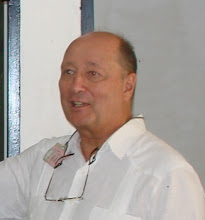 During the day yesterday, reports came in to us at HAS that there was a suspected outbreak of severe diarrhea and vomiting, with most of the cases in the Artibonite region. By the late afternoon, HAS began to accept an influx of such cases, all with similar symptoms, and we reviewed charts from Monday and Sunday to identify possible earlier cases. A total of 30 patients had been received by the middle of the night on Wednesday, mostly adults and primarily male. The patients came from localities near the Artibonite River, and many reported that they had drunk water from the river. The regional director of our Unite Communautaire de Sante, Dr. Willy Staco, came to HAS and reported that there were many cases in Petite Riviere. HAS staff who had been to the hospital in St. Marc reported that there was a large crowd outside the hospital, with an estimated 60 patients there.
During the day yesterday, reports came in to us at HAS that there was a suspected outbreak of severe diarrhea and vomiting, with most of the cases in the Artibonite region. By the late afternoon, HAS began to accept an influx of such cases, all with similar symptoms, and we reviewed charts from Monday and Sunday to identify possible earlier cases. A total of 30 patients had been received by the middle of the night on Wednesday, mostly adults and primarily male. The patients came from localities near the Artibonite River, and many reported that they had drunk water from the river. The regional director of our Unite Communautaire de Sante, Dr. Willy Staco, came to HAS and reported that there were many cases in Petite Riviere. HAS staff who had been to the hospital in St. Marc reported that there was a large crowd outside the hospital, with an estimated 60 patients there.As more patients came in during the afternoon and evening, the HAS mass casualty protocol was implemented, and patients started to line the halls and crowd the inpatient bays. Patients in the hospital’s Evaluation, Stabilization and Treatment unit were either discharged or admitted to the ward, and this unit became the intensive management site for the diarrheal patients.
The causative organism has not been identified and initial suspicions have focused on typhoid. Dr. Bien Aime, the epidemiologist in Integrated Community Services, began to take oral histories and identify where the patients were living when the fell ill.
All through the night, we maintained contact with HAS board member Scott Dowell, of the CDC, who updated us on reports from the CDC field staff in Haiti. Scott sent us very useful references for patient care.
This morning, we collected relevant specimens between 2am and 4am and sent them to the National Lab for evaluation by midday. In the meantime, we are pushing hydration and maintaining hygiene. No new cases came to HAS after midnight, and we are waiting to see what the morning brings.



